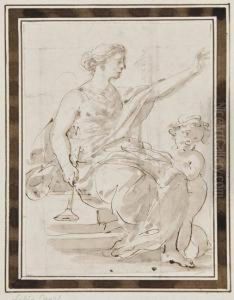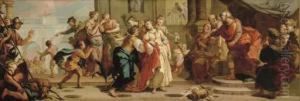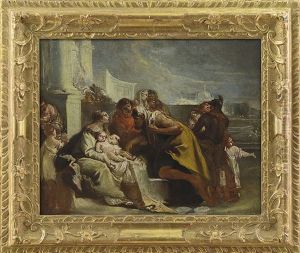Giustino Menescardi Paintings
Giustino Menescardi was an Italian painter of the 18th century, primarily known for his work in the Rococo style. Born in 1720 in Nervesa della Battaglia, a small town in the Veneto region of Italy, Menescardi developed his artistic skills in the Venetian artistic environment, which was one of the most flourishing centers for the arts in Europe at the time. His work was influenced by the great Venetian masters such as Giovanni Battista Tiepolo, whose lightness of touch and dynamic compositions were evident in Menescardi's own creations.
Menescardi's career was marked by his specialization in fresco painting, which included elaborate ceiling frescoes and wall decorations for palaces and churches. His style was characterized by elegant figures, soft colors, and a graceful use of light and shadow, which exemplified the Rococo aesthetic that was popular among the aristocracy of the period. Despite being less known than some of his contemporaries, Menescardi's work was appreciated for its decorative quality and attention to detail.
Throughout his career, Menescardi worked on numerous commissions across the Veneto region. One of his significant contributions was the decoration of the Villa Pisani in Stra, where his frescoes still can be admired today. His religious works also garnered attention, and he painted altarpieces and other religious-themed artworks for various churches.
Giustino Menescardi's contribution to the Italian Rococo movement may not have been as widely recognized as some of his peers, but his work remains a testament to the style and elegance of the period. He died in 1776, leaving behind a body of work that continues to be studied and appreciated by art historians and enthusiasts of the Rococo style.


















